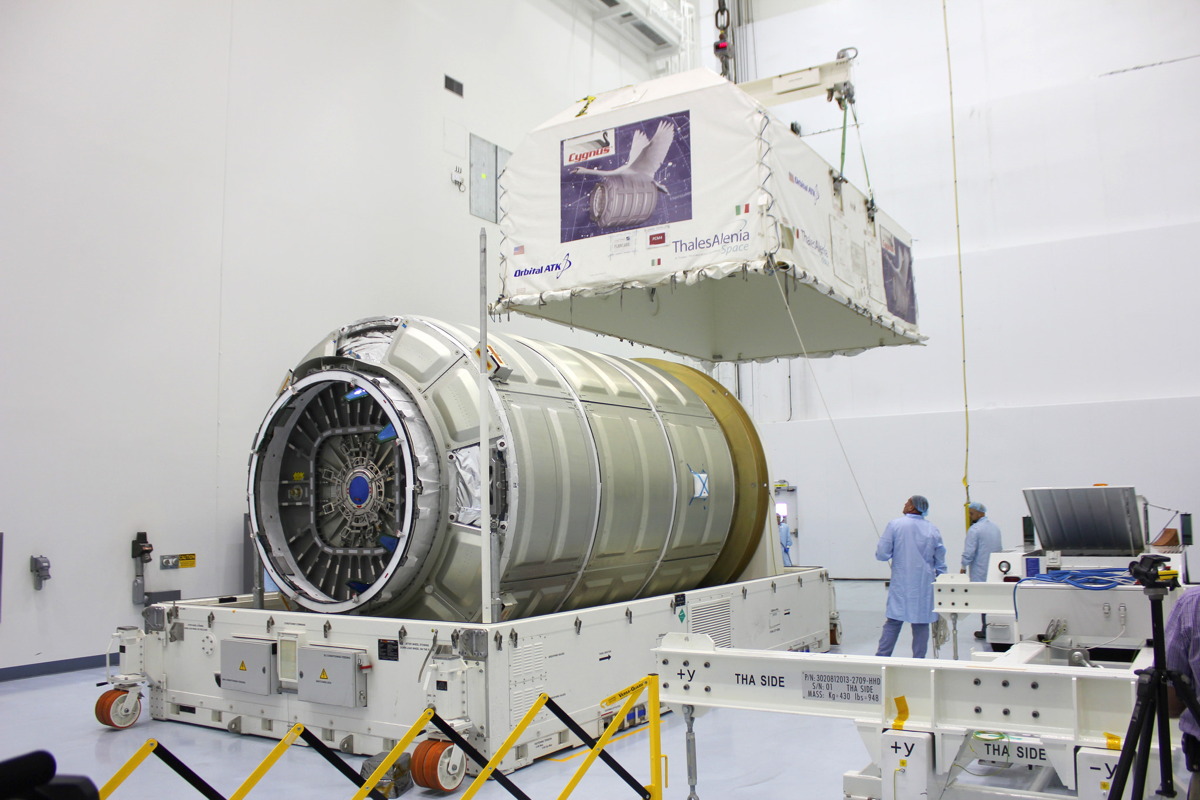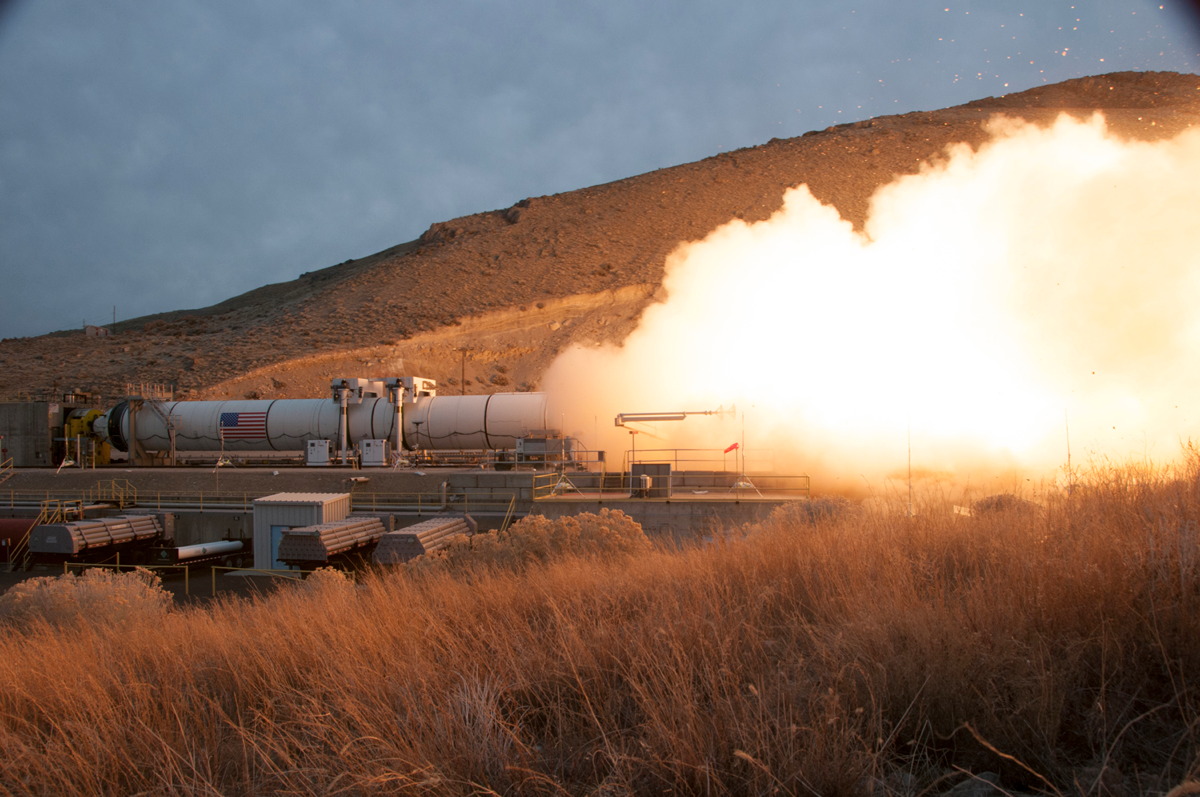A Year After Private Rocket Explosion, Orbital ATK Aims to Soar Again

One year after the explosive loss of an Antares rocket, as well as the Cygnus spacecraft riding atop it, Orbital ATK is getting ready for both Cygnus and Antares to return to flight. Meanwhile, the company continues to build its reputation as one of the most diverse aerospace businesses in the industry.
On Oct. 28, 2014, an Antares rocket made by the company now known as Orbital ATK exploded only seconds after liftoff, creating an enormous inferno that destroyed the company's unmanned Cygnus spacecraft. The craft was carrying supplies to the International Space Station, on Orbital's third cargo mission for NASA under a $1.9 billion contract.
While the general public may currently associate Orbital ATK primarily with that fiery accident, the company is still active in many other areas, including the construction of commercial satellites and satellite technology, designing and building scientific spacecraft including NASA's Dawn asteroid probe, and working with NASA on the agency's next-generation rocket designs. With a plan in place to get Cygnus back to flight in December, and the next Antares launch scheduled for spring of 2016, the company is on a steady path back to normal. As Frank Culbertson, president of Orbital ATK's Space Systems Group, told Space.com in an interview, Orbital ATK is "the biggest little company you don't know much about." [See Photos of Orbital ATK's Rocket Explosion in Pictures]
Rocket's return to flight
A Cygnus spacecraft carrying supplies to the orbiting space station is scheduled to launch aboard an Atlas V rocket (made by Orbital competitor United Launch Alliance) from Cape Canaveral Air Force Station on Dec. 3. A second Cygnus will fly sometime in March, also aboard an Atlas V. And finally, in May or June, Culbertson said, the company will once again attempt to launch a Cygnus craft aboard Orbital's own Antares rocket out of NASA's Wallops Flight Facility on Wallops Island, Virginia.
Part of the work that has gone into the return-to-flight plan, Culbertson said, has been making the Cygnus spacecraft compatible with the Atlas V rocket.
In 2008, Orbital Sciences Corporation (which merged with the aerospace and defense groups of Alliant Techsystems Inc. in February 2015, to form Orbital ATK), along with the commercial spaceflight company SpaceX, was awarded a Space Station Commercial Resupply Services (CRS) contract with NASA. This established an agreement that Orbital ATK would fly 10 cargo payloads to the Space Station.
Since the first Antares and Cygnus test flight in 2013 (which did not count toward Orbital ATK's delivery contract with NASA), the company has launched three out of 10 planned missions, with the third lost in the Antares explosion last year. Culbertson said the company still plans to fly seven more Cygnus payloads to the station. The launches scheduled for December, March and spring of 2016 will all carry NASA cargo. In early November, NASA is expected to make an announcement about the winners of its next Commercial Resupply Services awards, and Culbertson said Orbital ATK is hoping to win that contract once again.
Breaking space news, the latest updates on rocket launches, skywatching events and more!
Orbital ATK isn't the only company working to return to flight after the loss of a vehicle.
Less than a week after the Antares explosion, on Oct. 31, 2014, the space tourism company Virgin Galactic suffered a major blow when its first SpaceShipTwo space plane broke apart during a test flight, killing the co-pilot and seriously injuring the pilot. Earlier this year, on June 28, the commercial spaceflight company SpaceX also lost a vehicle, a Falcon 9 rocket carrying an unmanned Dragon space capsule packed with supplies for the International Space Station. The rocket broke apart into a cloud of smoke minutes after liftoff from Cape Canaveral.
This was the third space station resupply vehicle in less than a year to fail to reach its destination, after the Russian space agency lost control of a Progress 59 resupply vehicle in April.
"You know we've had colleagues in industry who have also had failures and are dealing with them," Culbertson told Space.com. "And I think we're all sympathetic to each other when these types of things happen. We had a lot of offers not just of sympathy and condolences but offers of support and help after the Antares incident. And we see that across the industry all the time. Aerospace is a pretty tight community."
The string of vehicle losses, by both the Russian space agency and private companies, has emphasized the continued risk of spaceflight, which Culbertson said the company has always planned for.
"I do want to emphasize the fact that we have to go into these type of programs and these type of operations with our eyes open, knowing that failures could occur," Culbertson said. "And you can't be afraid of that risk. You do have to be competent, and you have to know how to manage it and mitigate it. But you can't be afraid of it, or you're just never going to light the engine."
Other endeavors
In addition to flying cargo to the space station, Orbital ATK's Cygnus spacecraft can fly autonomously in low-Earth orbit for weeks, where it can serve as a microgravity science laboratory. Culbertson said the company had customers (both government and private) who would be using the craft for experiments or deployments after Cygnus delivers its payload to the station.
Orbital ATK is currently working with NASA to build boosters for the Space Launch System (SLS) heavy-lift rocket, which the agency plans to use to launch its next-generation Orion Multi-Purpose Crew Vehicle. That rocket is the one that may be able to carry human passengers to Mars and other exotic space destinations.
Orbital ATK also designed and manufactured NASA's unmanned Dawn spacecraft, currently orbiting the dwarf planet Ceres, which is the largest asteroid in the asteroid belt between Mars and Jupiter.
The company is also carrying on the work started by Orbital Sciences Corporation in the production and launch of communications and imaging satellites. In 1990, Orbital Sciences made the first launch of the Pegasus rocket, the first-ever commercially developed space-launch vehicle, which can take small payloads into low-Earth orbit. Culbertson said the company was "founded on the principle of being able to launch satellites on a commercial basis into space." The company makes a wide range of satellites for communications and imaging.
Orbital ATK put in a bid for a contract with NASA to transport humans to the International Space Station, but lost out to Boeing and SpaceX. Without the investment from NASA, Culbertson said the company has placed plans to transport people into space "on hold."
"We have people in the company that would love to do that, but it takes a significant investment, and right now we're not one of the players," he said.
Looking forward
Earlier this month, on Oct. 7, at the International Symposium of Private and Commercial Spaceflight (ISPCS), Culbertson talked about the future of the International Space Station. NASA is committed to funding and operating the American side of the station through 2024. Culbertson said he sees private and commercial spaceflight taking up a large role in low-Earth orbit.
"There's a couple different ways it could go," Culbertson told Space.com. "The station itself could become more commercialized and/or privatized. That may take some time, but I think industry would be willing to participate in that under the right circumstances. The station could also be used as a platform for developing other capabilities that could be used then in longer-duration spaceflight or even exploration beyond Earth orbit."
And, if private or commercial companies start launching their own private stations, Culbertson said Orbital ATK could support those stations in the same way they support the International Space Station now.
"Obviously, we're talking about all kinds of different ways that we could participate in that," he said. "As NASA moves beyond low-Earth orbit, I see a role for cargo providers to continue to support human activities, whether it's further out in Earth orbit or out in the vicinity of the moon. And of course beyond that, which is many years away, but I think having commercial industry support all of that is good for the government and good for exploration programs, and of course good for industry. And we see a role for ourselves in those kind of endeavors."
Follow Calla Cofield @callacofield. Follow us @Spacedotcom, Facebook and Google+. Original article on Space.com.

Calla Cofield joined Space.com's crew in October 2014. She enjoys writing about black holes, exploding stars, ripples in space-time, science in comic books, and all the mysteries of the cosmos. Prior to joining Space.com Calla worked as a freelance writer, with her work appearing in APS News, Symmetry magazine, Scientific American, Nature News, Physics World, and others. From 2010 to 2014 she was a producer for The Physics Central Podcast. Previously, Calla worked at the American Museum of Natural History in New York City (hands down the best office building ever) and SLAC National Accelerator Laboratory in California. Calla studied physics at the University of Massachusetts, Amherst and is originally from Sandy, Utah. In 2018, Calla left Space.com to join NASA's Jet Propulsion Laboratory media team where she oversees astronomy, physics, exoplanets and the Cold Atom Lab mission. She has been underground at three of the largest particle accelerators in the world and would really like to know what the heck dark matter is. Contact Calla via: E-Mail – Twitter


